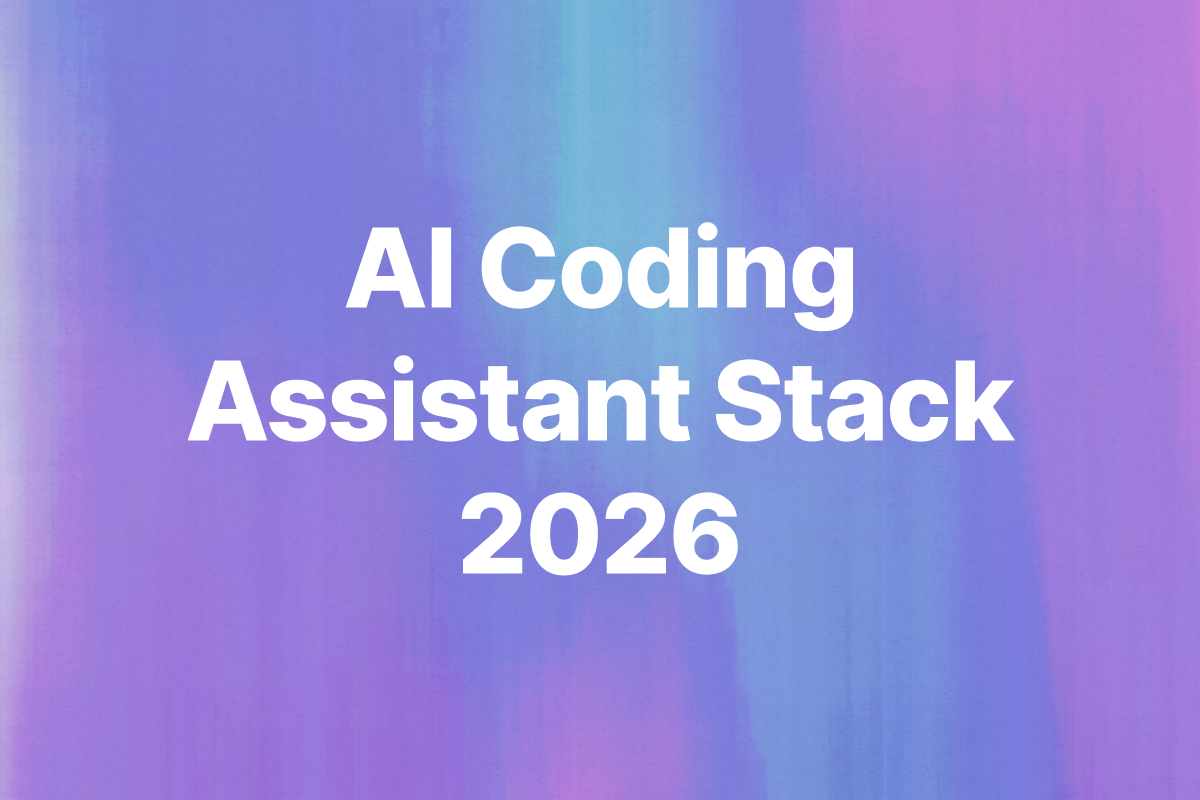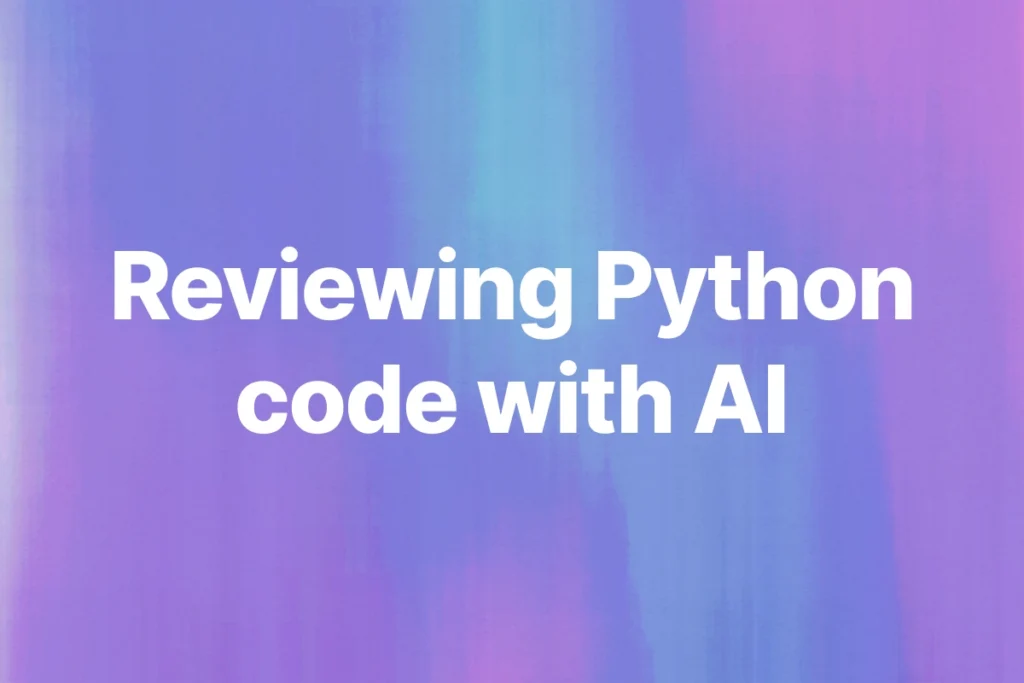AI is changing how we write software. You’ve probably seen the flood of tools claiming to generate code, run tests, fix bugs, or even replace engineers. A16Z recently published a deep dive on what they call the Trillion Dollar AI Software Development Stack.
It maps out how AI is starting to reshape every part of the dev lifecycle. Their breakdown includes Cursor for in-editor coding, Windsurf for project-aware AI chat, and Bito for automated pull request reviews.
These tools aren’t just prototypes. Cursor hit $500 million ARR in just over a year. Google paid $2.4 billion to acqui-hire Windsurf. Bito is already running AI code reviews in thousands of repos.
This blog is a follow-up to that A16Z post. But instead of a full stack thesis, we’re going practical. Here’s a lean AI coding assistant stack you can start using today. It covers the full dev loop, doesn’t need special infra, and improves your workflow.
Why a lean AI coding assistant stack matters
Most developers don’t want to stitch together five tools just to get a pull request reviewed. You already have enough going on with your editor, Git, CI, issue tracker, and local dev setup.
The problem isn’t that there aren’t enough AI tools. It’s that too many are half-baked, overlapping, or trying to replace entire workflows instead of making them better.
A lean AI stack does one thing: improve speed and quality without getting in your way. One solid tool per job. No vendor lock-in, no orchestration overhead, no waiting for platform maturity.
The key phases it needs to cover:
- Writing code with context
- Reviewing pull requests with actual depth
- Asking questions about your own codebase
- Automating basic tests and devops tasks
If a tool can handle one of those well and plug into your IDE, CLI, or CI, it’s in. Everything else is noise.
A quick recap: A16Z’s AI Software Stack
The A16Z post is worth reading. It’s a grounded take on where AI tooling is actually working for developers.
They define the core loop as Plan → Code → Review → Test, and map out tools that support each step. For example:
- Cursor as the in-editor coding assistant, with support for multiple models and tight integration with your repo
- Windsurf as the project-aware AI chat that understands your file structure, past commits, and technical context
- Bito for automating pull request reviews, complete with static analysis, security checks, and structured summaries

They also note that even a basic AI assistant can boost dev productivity by 20%. And a best-in-class setup could double it. With 30 to 47 million developers worldwide, that’s not just tooling. It’s global economic impact.
But for most devs, the full stack isn’t the goal. We want results now. The next section breaks down what a practical, minimal version of that stack looks like.
The lean AI coding assistant stack (2025)
This is a practical AI stack that improves developer workflows without platform bloat. It covers five core tasks with five focused tools, each designed to plug into your existing setup with minimal friction.
And it is mostly what I use too.
1. Code Generation – Cursor
Cursor is an AI-native VS Code alternative IDE. Built around GPT-4 and Claude, Cursor lets you write and edit code with full repository context.
Key features:
- Supports GPT-4, Claude, and local models with simple model switching
- .cursor/rules config for enforcing project-specific code standards
- Inline autocomplete, file-level edits, and background agents for applying diffs
- Multi-file awareness with dependency tracking
- Easy setup with GitHub sync and built-in terminal support
Cursor improves speed without compromising structure, especially on large codebases with complex module relationships.
2. Code Review – Bito
This is where developers lose most time: manual code reviews.
Bito automates code reviews directly in GitHub, GitLab, Bitbucket, or your IDE. It analyzes diffs, understands code structure, and enforces your team’s standards with precision.
Key features:
- Context-aware reviews using embeddings of your actual codebase
- Custom review guidelines for coding style, architecture, and security
- OWASP and OSS vulnerability scanning with remediation suggestions
- Pull request summaries with theme detection and review effort scoring
- One-click integration into CI/CD, CLI, and dev environments
- Built-in support for static analysis tools and custom linters
Bito is designed to cut review time while increasing code quality and consistency across teams.
3. AI Chat – Windsurf
Although you can use your native AI coding assistant (eg. Cursor) for this too. But in my opinion:
Windsurf is the most repo-aware AI assistant for engineering teams. It syncs with your codebase and provides accurate, contextual answers to engineering questions.
Key features:
- Full-project indexing, including file structure, functions, and commit history
- Understands and answers project-specific questions using code context
- Multi-file reasoning for debugging, onboarding, and architectural exploration
- Responds based on recent changes, not just static snapshots
- Available inside the browser or integrated into IDEs
Windsurf helps developers understand legacy code, onboard faster, and resolve blockers quickly.
4. Test Automation – Native via Cursor + Bito
This stack avoids dedicated AI test generation tools to keep things simple. Instead, testing is supported through capabilities already present in Cursor, while test execution remains in your existing CI setup.
Cursor supports:
- Unit test generation from diffs or inline prompts
- Project-specific test templates defined in .cursor/rules
- Background agents that can scaffold tests across updated files
Bito supports:
- Static analysis in PRs to detect new functions or modules that lack corresponding test coverage
- Detection is heuristic-based, not tied to runtime coverage metrics
- Flags missing or weak test structure based on naming conventions and file structure
5. Documentation & QA – Mintlify
Mintlify generates and maintains clean developer-facing documentation that updates with your code. It supports dynamic previews, integrated AI chat, and auto-sync with GitHub.
Key features:
- Auto-generates docs for APIs, functions, and modules with inline comments
- Syncs with GitHub for real-time updates as code changes
- Includes live code blocks and interactive examples
- Offers a built-in AI assistant to query docs in real time
- Supports Markdown, OpenAPI, and custom doc structures
Mintlify makes documentation continuous, instead of a one-time task during release cycles.
Conclusion
AI is already reshaping how code gets written, reviewed, tested, and documented. The tools in this AI coding assistant stack (Cursor, Bito, Windsurf, and Mintlify) are focused, fast, and designed to fit directly into how developers work today.
This stack does not require changing platforms, building internal tooling, or waiting for enterprise readiness.
It improves the feedback loop, reduces friction in common tasks, and gives individual developers and small teams the same leverage that large companies are chasing with complex AI platforms.
If you want to make AI a real part of your workflow, start with this. A lean, proven AI coding assistant stack that gets out of your way and lets you move faster.






